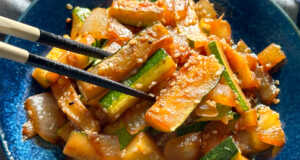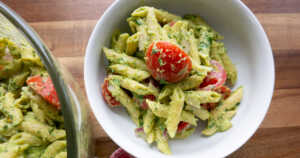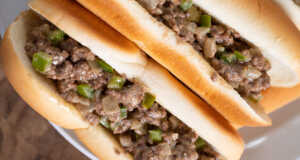Spaghetti alla Cacio e Pepe
Three-ingredient pasta is IN! Pecorino, Parmigiano, and Pepe. That’s it!
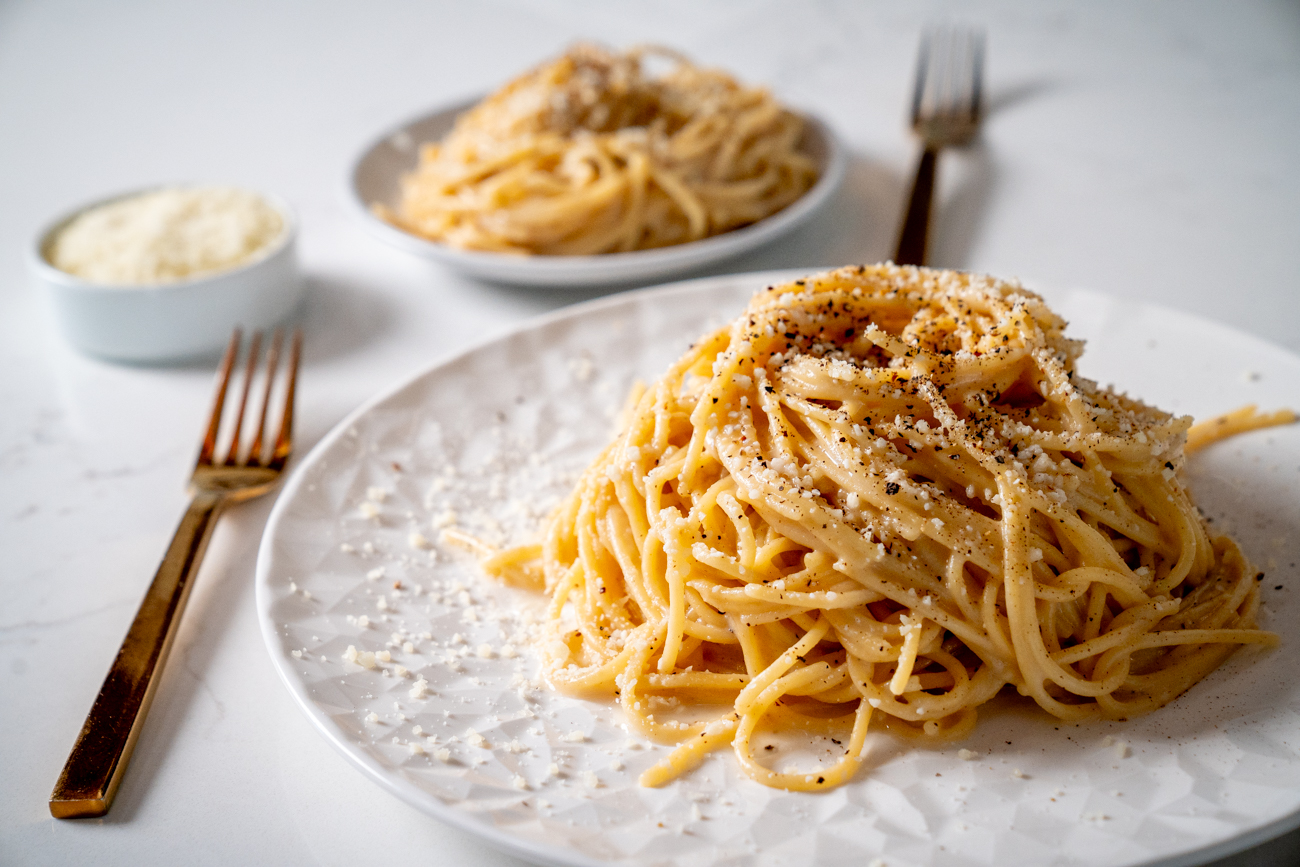
Say it with me, Catcho – e – Peh Pay. This recipe may seem daunting and rightfully so. In my opinion, this method is the hardest pasta recipe to perfect out of the four classic Roman pastas, but it’s the queen of all pasta techniques. Traditionally Cacio E Pepe is made with aged sheep’s milk cheese (cacio) and freshly cracked black pepper (pepe) tossed together with cooked pasta and salty water to develop an emulsification as creamy as Alfredo. It’s all about the sauce. The worst part of this recipe is that there is such a thing as adding TOO MUCH cheese. Dum Dum DUM! The good news is that if you can perfect this pasta all other pastas will be a cakewalk.
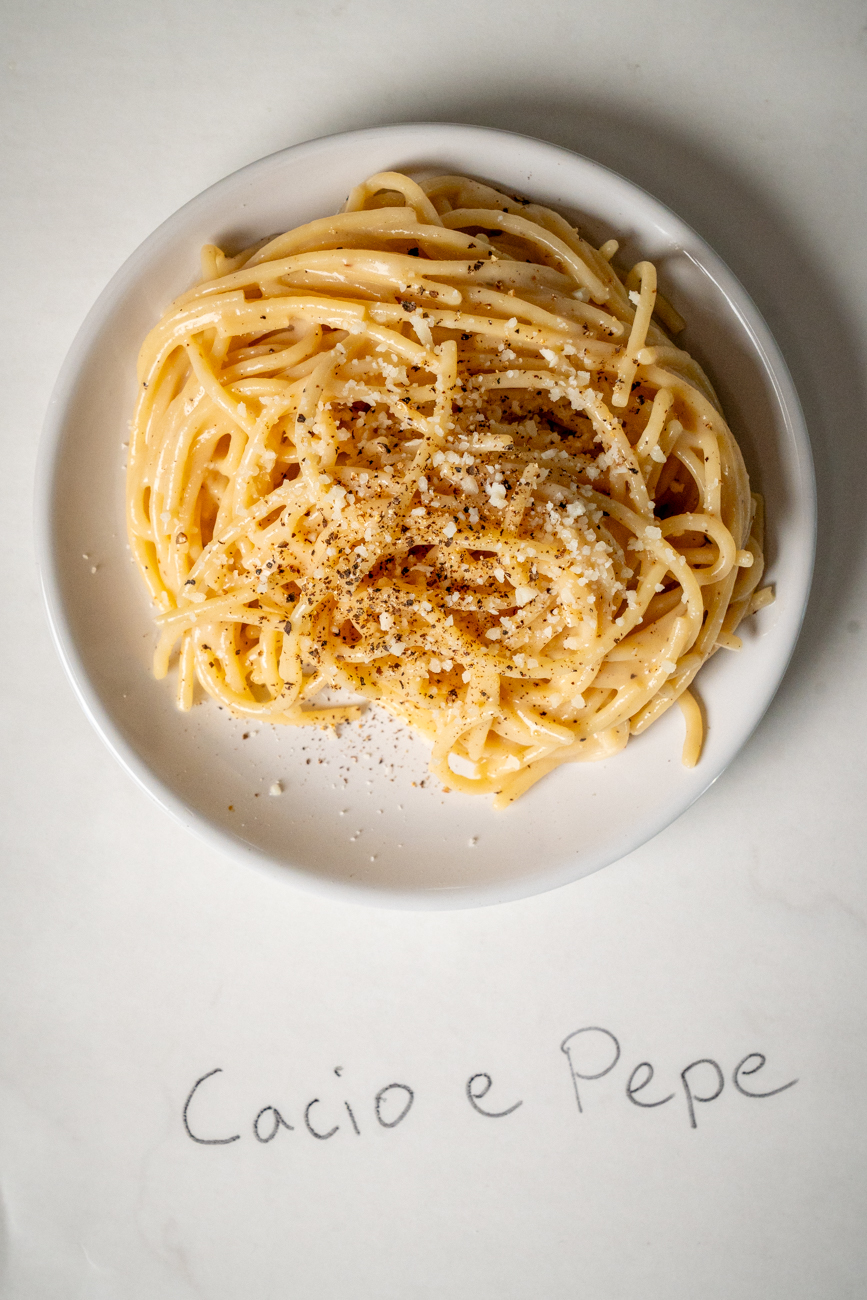
The scientific way this pasta comes together is through a big word we call emulsification. This means the water, the sticky pasta, and the cheese all need to work in beautiful harmony to create a creamy, stabilized sauce. Think of how vinegar and oil always split when mixed, but with a little Dijon mustard or pasted garlic, the two unattracted foods have something to stick to and become one. The pasta in this recipe is that unifier. This means the ratio of cheese to pasta has to be balanced. It may seem like too little cheese, but that’s only for the sauce and you can always garnish with plenty more cheese.
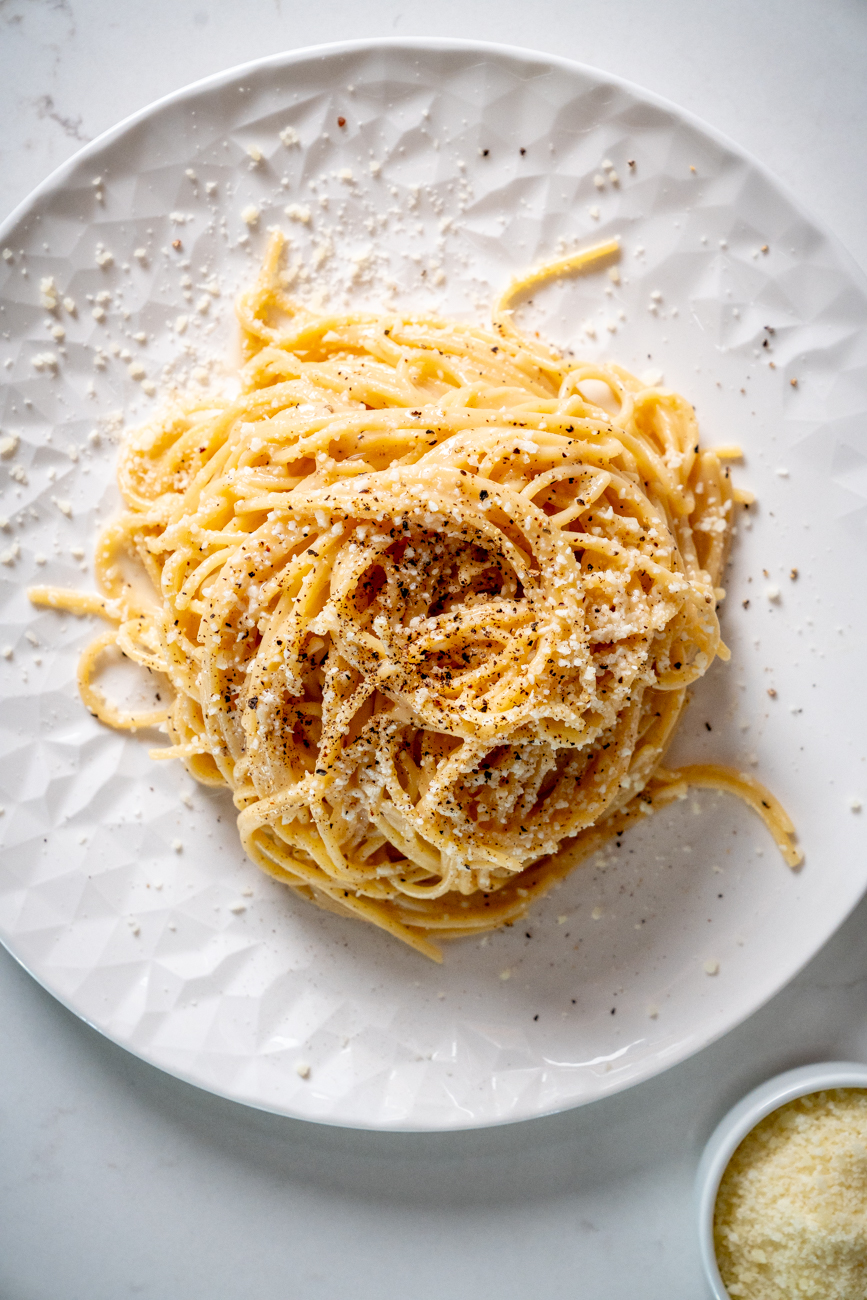
Pecorino is the cheese we use in Italy. It’s the new Parm. Not only do we get that nutty aged cheese flavor from this cheese being aged for at least eight months, but we also get this funky flavor from the sheep’s milk. To me, adding parmesan to this recipe would be like adding ricotta (cow’s milk cheese) to a dish that called for feta (sheep’s milk cheese). You can use Parmesan as a substitute, but just know these facts.
When choosing your pasta for Cacio e Pepe, like in spaghetti there are only little strands of noodles for the sauce to stick to, which means I don’t need to add too much cheese to get the job done. Let’s say you want to use a tubular noodle, like rigatoni or penne — those pastas have the exterior of the noodle and the interior to coat, so you will need to amend your cheese to ensure a proper coating. Always start small.

You won’t regret making a budget-friendly meal like this. There are always two things I have on hand in my house, that’s aged cheese and fresh pasta. That’s all you need. I call this my in case of emergency pasta. Twenty minutes and dinner is served.

Spaghetti alla Cacio e Pepe
Yield(s): Serves 4
10m prep time
9m cook time
Ingredients
- 12 oz. good spaghetti
- 1/2 cup pecorino romano
- 1/4 cup parmigiano reggiano
- 2 teaspoons freshly cracked black pepper
Preparation
- Bring a pot of salted water to a boil. Cook spaghetti in water until perfectly cooked, 9 minutes.
- Drain pasta and reserve 3/4 cup of salted pasta water.
- Add cooked pasta to a large saute pan with 1/2 cup salted pasta water. Use a wooden spoon to stir in grated cheese and black pepper.
- Shake the pan back and forth while stirring vigorously with the spoon to help the sauce create an emulsion until the cheese is fully melted and incorporated. If the pasta absorbs the water too fast, just add more pasta water. If you run out, add tap water. Be sure to adjust the seasoning afterwards.




